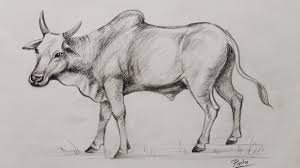Artwork
The following artwork is an attempt to represent concepts from the world’s contemplative traditions in visual form. At its best, spiritually themed art is sometimes considered religious iconography – visual representations which attempt to mediate the sacred. All pieces can be minted and displayed as NFTs on the Ethereum Blockchain through the links below. Images and directions for prints can also be found here.
Kintsugi Series
Kintsugi is the art of “golden repair.” In this artform, when a ceramic is broken, it is pieced back together using gold or other metallic bonding. The piece is sometimes thought of as being stronger and more beautiful after it has been broken and repaired than it was originally.
This series is a collection of human likenesses, which have been broken and repaired using digital kintsugi. The concept is related to Cistercian monk Thomas Keating’s understanding of “The Divine Therapy,” which emphasizes the possibility of psychological healing through meditative practice from a Christian perspective. Click on the image to see the 3D rendering or click the links below to view the full collection.
Collection: (1, 2, 3, 4, 5, 6, 7, 8, 9, 10)
Polishing the Mirror
In the Sufi Tradition the soul is sometimes thought of as a mirror for God, but one which can only reflect the Divine accurately if it is polished. “Polishing the Mirror” or “Polishing Rust Off The Heart” remain common metaphors for moral and spiritual development within Sufism.
This series contains two pieces: Polishing the Mirror, and Polished Mirror.
Collection: (1, 2)
In Search of the Missing Ox
The stages of spiritual development from a Zen Buddhist perspective are sometimes represented by a series of images called the Zen Ox-Herding Pictures, also sometimes referred to in their totality as In Search of the Missing Ox.
The Ox in the series is traditionally interpreted through the Mahayana concept of Tathagata-Garbha – “Buddha-Nature” or “Buddha-Womb.” The Tathagatagharba is commonly seen as inherent in each individual, and represents either our potential to become a Buddha, or our already inherent Buddha Nature, which only needs to be realized. The Tathagatagharba is also referred to within Zen as one’s True or Original Nature.
Many contemplative traditions contain one or more “maps of spiritual development” – designed, among other things, to lead one toward authentic selflessness. The pieces here represent the third stage in the Zen Series, in which one “catches a glimpse” of the Ox.
The Tao is Like a Well
For the Tao Te Ching, the Tao is our own Ground of Being and the Ground of Being which runs through all things. To live rightly, an aspirant must open themselves to, center themselves in, and be at one with, Tao. A “Master” is simply lived by Tao, in all naturalness and simplicity.
Collection: (1, 2)
Selfish Action Imprisons the World
“Selfish action imprisons the world, Arjuna. Act selflessly, without any thought of personal profit.”
“Break free from the ego cage of ‘I, me, and mine.’”
– Bhagavad Gita; 3:9, 2:71
Collection: (1, 2)
Essence, Center, Ground
…you must dwell in your essence, in your ground.
Collection: (1, 2)
Dark Night of the Soul
The psychological experience of “Dark Nights of the Soul” are sometimes recorded as part of the contemplative’s journey. These can be short or long periods of spiritual dryness, confusion, pain, and mental fragmentation or multiplicity. What distinguishes these experiences from daily ups and downs is that they seem to come as a result of a serious spiritual practice or path. The soul feels it has genuinely chosen the good, and yet it suffers intensely. In some traditions, these experiences of Dark Nights are interpreted as a necessary part of the development of the soul.
Collection: (1, 2, 3)
Forgiveness
Collection: (1)
Nibbana, Union
Nibbana, Cessation, Self, Brahman, Oneness, Union, Fana, Samadhi, Original Face, True Nature, Direct Experience of Being. This series contains descriptions, both ancient and modern, of the meditative experience of the Absolute.
Sources for each quotation can be found here.
Collection: (1, 2, 3, 4, 5, 6, 7, 8, 9, 10, 11, 12)



